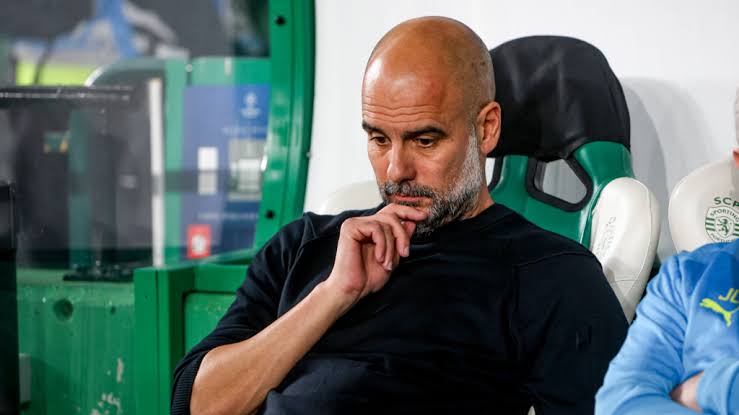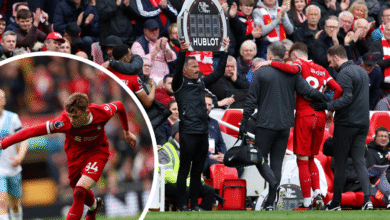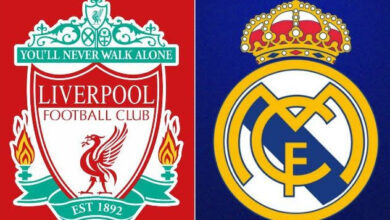Chelsea poised to sign Man City starlet Isaac McGillvary

In the ever-evolving landscape of modern football, where astronomical transfer fees dominate headlines and established stars command the spotlight, a quieter revolution continues to unfold in the academy systems of Europe’s elite clubs. This revolution centers on the identification, development, and strategic acquisition of young talent who represent the future of the beautiful game. At the heart of this movement lies a compelling narrative that has captured the attention of football insiders: Chelsea’s imminent acquisition of Manchester City’s highly-rated youngster Isaac McGillvary.
The story of McGillvary’s potential move from the Etihad Stadium to Stamford Bridge represents more than just another youth transfer. It embodies the strategic vision of two Premier League giants, each with distinct philosophies toward youth development, and highlights the intense competition that exists even at the grassroots level of English football. As Chelsea prepares to welcome this promising attacking midfielder with a substantial six-year contract offer, the transfer illuminates broader themes about modern football’s approach to nurturing tomorrow’s stars.
Isaac McGillvary’s journey to prominence within Manchester City’s academy system reads like a blueprint for modern football development. The young attacking midfielder, who has earned recognition as an England Under-14 international, represents the culmination of years of systematic youth development at one of the world’s most successful football clubs. His emergence from City’s academy ranks hasn’t happened by accident but rather through a carefully orchestrated program designed to identify and nurture exceptional talent from the earliest stages.
What sets McGillvary apart from his contemporaries isn’t merely his technical ability, though that is certainly noteworthy. Those who have observed his development speak of a player who possesses an innate understanding of the game that transcends his years. His vision on the pitch, combined with an ability to find space in congested areas, marks him as a player with the potential to excel at the highest levels of professional football. The attacking midfielder’s style of play reflects the modern emphasis on versatility, with his ability to operate across multiple positions in the forward line making him an attractive prospect for clubs seeking tactical flexibility.
The significance of McGillvary’s England Under-14 call-up cannot be understated. In an era where international recognition at youth levels serves as a crucial barometer for future success, his inclusion in the national setup validates the faith that both Manchester City and England’s youth development system have placed in his abilities. This recognition also positions him among the most promising players of his generation, a factor that undoubtedly influenced Chelsea’s decision to pursue his signature aggressively.
The sporting pedigree that flows through Isaac McGillvary’s veins adds another fascinating dimension to his football journey. As the son of Jermaine McGillvary, the former Huddersfield Giants winger and England Rugby League international, Isaac carries the weight and privilege of sporting excellence within his family lineage. This heritage provides unique insights into the mental fortitude and competitive spirit that often characterizes elite athletes.
Jermaine McGillvary’s career in Rugby League was marked by exceptional achievement, including his memorable performances for England in the 2017 World Cup, where his try-scoring exploits captured the imagination of fans across the globe. His experience competing at the highest levels of professional sport provides Isaac with an invaluable resource as he navigates the pressures and expectations that accompany a career in elite football. The transition from rugby league excellence to football potential within the same family represents a fascinating cross-pollination of sporting cultures.
The influence of having a professional athlete as a father extends beyond mere genetic advantages. Jermaine’s understanding of the dedication, sacrifice, and mental resilience required to succeed in professional sport provides Isaac with a foundation that many young players lack. This background likely contributed to his ability to adapt to the demands of Manchester City’s academy system and may prove equally valuable as he potentially transitions to Chelsea’s development program.
## Manchester City’s Academy: A Breeding Ground for Excellence
To understand the significance of Isaac McGillvary’s development, one must first appreciate the sophisticated nature of Manchester City’s academy system. Under the guidance of Pep Guardiola and the club’s broader philosophical approach to football, City’s youth development program has evolved into one of the most respected in world football. The club’s investment in infrastructure, coaching expertise, and holistic player development has created an environment where young talents like McGillvary can flourish.
The Etihad Campus, with its state-of-the-art facilities and comprehensive approach to player development, represents the modern standard for youth academies. The integration of sports science, psychological support, and tactical education creates a holistic environment designed to maximize each player’s potential. For McGillvary, this environment has provided the perfect setting to develop not only his technical skills but also his understanding of the game’s tactical complexities.
Manchester City’s philosophy under Guardiola emphasizes technical excellence, tactical intelligence, and the ability to operate in multiple positions. These principles have clearly influenced McGillvary’s development, as evidenced by his versatility as an attacking midfielder capable of impacting games from various positions. The fact that he has been identified as one of the brightest prospects to emerge from City’s academy in recent years speaks volumes about both his individual talent and the quality of the development program that has shaped him.
The decision by Manchester City to potentially allow McGillvary’s departure raises interesting questions about the club’s long-term academy strategy. While City has invested heavily in youth development, the pathway to first-team opportunities remains highly competitive. The club’s success at the senior level, while admirable, creates challenges for young players seeking to break into the first team. This reality often forces promising youngsters to seek opportunities elsewhere, as appears to be the case with McGillvary.
## Chelsea’s Youth Development Vision
Chelsea’s interest in Isaac McGillvary reflects a broader strategic vision that has defined the club’s approach to youth development for over two decades. The West London club’s commitment to nurturing young talent has produced a remarkable lineage of successful players who have gone on to achieve significant success both at Stamford Bridge and beyond. This tradition of excellence in youth development has created a culture where promising young players are not only welcomed but actively pursued.
Under the management of Enzo Maresca, Chelsea appears to be doubling down on their commitment to youth development. Maresca’s own background as a tactically astute coach with experience in developing young players makes him an ideal figure to oversee the integration of promising talents like McGillvary into the club’s long-term plans. The Italian’s understanding of modern football’s tactical demands aligns perfectly with the skill set that McGillvary brings to the table.
The six-year contract offer extended to McGillvary represents more than just a financial commitment; it symbolizes Chelsea’s belief in the player’s long-term potential. Such lengthy contracts for young players are typically reserved for individuals who club officials believe can make significant contributions to the first team in the future. The length of the proposed deal suggests that Chelsea views McGillvary not as a short-term prospect but as a cornerstone of their future plans.
Chelsea’s academy has historically served as a pathway to first-team opportunities, with players like Mason Mount, Tammy Abraham, and Reece James serving as recent examples of successful graduates. This track record of promoting youth players to senior level provides McGillvary with a tangible example of what his future at the club might hold. The fact that these players have gone on to represent England at senior level further validates Chelsea’s development methods.
## The Transfer Landscape: Context and Implications
The potential transfer of Isaac McGillvary occurs within a broader context of Chelsea’s summer transfer activities, which appear to be guided by a clear strategic vision. The club’s pursuit of Borussia Dortmund’s Jamie Gittens, who contributed 12 goals for the German giants in the previous season, demonstrates Chelsea’s commitment to acquiring young, attacking talent with proven track records. Similarly, the acquisition of former Ipswich Town striker Liam Delap, who has already made an impact in the Club World Cup with a goal and an assist in four appearances, shows the club’s focus on players who can contribute immediately while offering long-term potential.
These transfers collectively paint a picture of a club that is strategically building for both immediate success and future sustainability. The combination of proven performers like Gittens and Delap with high-potential prospects like McGillvary suggests a balanced approach to squad building that recognizes the importance of both experience and youth in modern football.
The timing of these transfers also reflects Chelsea’s current position in the football landscape. The club’s participation in the Club World Cup, where they have reached the quarter-finals, provides an additional platform for new signings to integrate into the squad and demonstrate their abilities on a global stage. For young players like McGillvary, such opportunities can be invaluable in accelerating their development and adaptation to the demands of elite football.
The competition for Isaac McGillvary’s signature highlights the intense rivalry that exists between Premier League clubs in the pursuit of young talent. Manchester City and Chelsea, despite their different approaches to youth development, both recognize the value of identifying and securing promising players before they reach full maturity. This competition extends beyond mere player acquisition to encompass broader questions about development philosophy, pathway opportunities, and long-term strategic vision.
The willingness of clubs to invest significant resources in young, unproven players reflects the modern reality of football economics. The potential return on investment from developing a world-class player from youth level far exceeds the costs associated with purchasing established stars. This economic logic drives much of the activity in the youth transfer market and explains why clubs are prepared to offer substantial contracts to teenagers who have yet to make their professional debuts.
For McGillvary, the choice between remaining at Manchester City and joining Chelsea represents more than just a change of scenery. It involves weighing the merits of different development philosophies, assessing the likelihood of first-team opportunities, and considering the long-term trajectory of his career. The fact that he appears to be leaning toward Chelsea suggests that the club’s presentation of their development pathway and long-term vision has resonated with both the player and his advisors.
The facilities and infrastructure available to young players in modern football represent a significant advancement from previous generations. Both Manchester City and Chelsea have invested heavily in creating environments that support comprehensive player development, from technical training to sports science support. These investments reflect a growing understanding of the factors that contribute to successful player development and the importance of creating optimal conditions for young talents to flourish.
The state-of-the-art training facilities at both clubs provide young players with access to the same resources and support systems utilized by first-team squads. This integration helps bridge the gap between youth and senior football, allowing prospects like McGillvary to experience professional standards from an early age. The psychological benefits of training in such environments cannot be understated, as they help young players develop the confidence and mindset necessary for success at the highest levels.
The comprehensive nature of modern youth development programs extends beyond pure football training to encompass education, personal development, and career planning. This holistic approach recognizes that successful professional footballers require more than just technical ability; they need the mental resilience, tactical understanding, and personal maturity to navigate the challenges of elite sport. Both Manchester City and Chelsea have embraced this philosophy, creating programs that address all aspects of player development.
The legacy of successful youth development at both Manchester City and Chelsea provides important context for understanding the significance of Isaac McGillvary’s potential transfer. Chelsea’s academy has produced a remarkable array of talented players who have gone on to achieve success at the highest levels of football. The examples of Mason Mount, who became a key player for both Chelsea and England before his move to Manchester United, and Tammy Abraham, who established himself as a clinical striker before joining Roma, demonstrate the club’s ability to develop players who can compete at the elite level.
These success stories serve as powerful recruiting tools when Chelsea approaches promising young players like McGillvary. The ability to point to recent examples of academy graduates who have achieved international recognition and secured lucrative professional contracts provides tangible evidence of the club’s commitment to youth development. This track record distinguishes Chelsea from many other clubs and helps explain why they are often successful in attracting the brightest young talents.
The role of Frank Lampard during his first tenure as Chelsea manager provides another important reference point for understanding the club’s approach to youth development. Lampard’s willingness to integrate young players into the first team, necessitated by a transfer embargo but aligned with his personal philosophy, demonstrated that Chelsea was prepared to provide opportunities for academy graduates. The success of that approach, which saw Chelsea achieve a fourth-place finish in the Premier League while relying heavily on homegrown talent, validated the club’s investment in youth development.
The market for young football talent has evolved dramatically in recent years, with clubs increasingly willing to invest substantial sums in players who have yet to establish themselves at professional level. This evolution reflects several factors, including the escalating costs of established players, the potential for exceptional returns on investment, and the growing sophistication of talent identification systems. The case of Isaac McGillvary represents a typical example of this modern approach to youth recruitment.
The six-year contract offer extended to McGillvary reflects the contemporary understanding of youth development timelines. Modern clubs recognize that developing a player from academy level to first-team regular requires significant time and investment. Longer contracts provide security for both the player and the club while allowing for the extended development period necessary to maximize potential. This approach contrasts sharply with previous generations, where young players were often given shorter-term opportunities to prove themselves.
The financial implications of these youth transfers extend beyond the immediate contract values to encompass the long-term economic benefits of successful development. A player who progresses through the academy system to become a first-team regular represents tremendous value to the club, both in terms of sporting contribution and potential transfer value. This economic logic drives much of the investment in youth development and explains why clubs are prepared to compete aggressively for promising young talents
Isaac McGillvary’s playing style and tactical attributes provide important insights into why Chelsea has identified him as a priority target. As an attacking midfielder with the versatility to operate in multiple positions, he represents the type of player that modern football increasingly values. His ability to create chances, find space in congested areas, and contribute to both attacking and defensive phases of play aligns perfectly with contemporary tactical trends.
The emphasis on tactical intelligence in modern football means that young players must demonstrate not only technical ability but also the cognitive skills necessary to make quick decisions under pressure. McGillvary’s development within Manchester City’s system, with its emphasis on positional play and tactical sophistication, has likely contributed to his understanding of these aspects of the game. This tactical education will serve him well as he transitions to Chelsea’s system under Enzo Maresca.
The versatility that McGillvary brings to the attacking midfield position reflects the modern trend toward players who can operate effectively in multiple roles. This flexibility provides tactical options for coaches while maximizing the player’s potential for first-team involvement. For a young player seeking to establish himself at elite level, this versatility can be the difference between regular opportunities and extended periods on the periphery of the squad.
Isaac McGillvary’s recognition at England Under-14 level adds an important international dimension to his profile and potential transfer. Representation at youth international level serves as both validation of a player’s abilities and a predictor of future success. The England youth system’s track record of producing players who go on to represent the senior national team provides additional context for understanding McGillvary’s potential trajectory.
The pathway from youth international football to senior representation has become increasingly clear in recent years, with players like Jude Bellingham, Phil Foden, and Bukayo Saka serving as examples of successful progression through the system. For McGillvary, his early recognition at international level suggests that he possesses the attributes necessary to continue this upward trajectory. The choice of club for his continued development will play a crucial role in determining whether he can fulfill this potential.
The international aspect of McGillvary’s profile also adds commercial value to his potential transfer. Players who represent England, even at youth level, often command additional attention from fans and media. This increased profile can translate into commercial opportunities for both the player and the club, adding another dimension to the economic rationale for youth investment.
The potential transfer of Isaac McGillvary from Manchester City to Chelsea represents more than just another youth recruitment success story. It embodies the strategic thinking, long-term planning, and competitive dynamics that characterize modern football’s approach to youth development. The significant contract offer extended by Chelsea demonstrates their belief in McGillvary’s potential while highlighting the premium placed on promising young talent in contemporary football.
For McGillvary himself, the decision represents a crucial juncture in his young career. The choice between remaining at Manchester City, where he has developed his skills and established his reputation, and joining Chelsea, with their strong track record of developing youth players, will likely influence the trajectory of his professional career. The six-year contract offer provides security and demonstrates long-term commitment, but it also comes with expectations and pressure to fulfill his considerable potential.
The broader implications of this transfer extend beyond the immediate impact on the two clubs involved. It reflects the ongoing evolution of youth development in modern football, where clubs are prepared to invest significant resources in players who may not contribute to the first team for several years. This long-term thinking represents a mature approach to squad building that recognizes the importance of sustainable development over short-term fixes.
As Chelsea prepares to welcome Isaac McGillvary into their academy system, the transfer serves as a reminder of the importance of youth development in modern football. The success of this investment will ultimately be measured not just in McGillvary’s individual achievements but in the broader impact on Chelsea’s long-term competitiveness and their ability to continue producing players capable of competing at the highest levels of the game.
The story of Isaac McGillvary’s potential move to Chelsea thus represents a fascinating case study in modern football’s approach to youth development, strategic planning, and the pursuit of sustainable success. As the transfer moves toward completion, it will be interesting to observe how both the player and the club navigate the challenges and opportunities that lie ahead in their shared journey toward footballing excellence.














